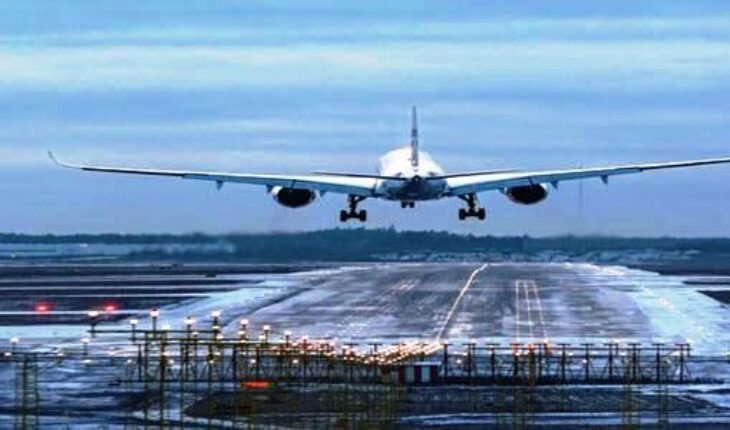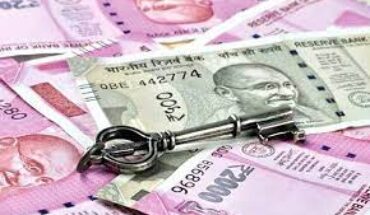By Dominick Rodrigues
Mumbai : Covid-19 across India has significantly impacted air travel and dented confidence in aviation recovery, despite the first two months of 2021 witnessing a solid improvement in air travel — after a steep decline in EBITDAR losses in 3QFY21 as airline operations normalised, according to a +India Ratings Research+ (Ind-Ra) report by Abhishek Nigam, Associate Director, India Ratings Research PVT Ltd.
Late March and April 2021 witnessed sharp rise in active Covid cases across India that has set back recovery in domestic and international travel by three to six months, while highlighting three new challenges: 1) higher fuel expenses as crude prices recover amid a soaring global demand, 2) rising competition intensity amid the possible re-start of operations by Jet Airways (India) Limited and newer shareholder/owner of Air India Limited (‘IND AAA(CE)’/Stable) possibly becoming more aggressive in acquiring market share, and 3) likely pressure on airline yields amidst scramble for market share realignment pre-Covid period.
“Ind-Ra believes the domestic air travel recovery should resume in three months, if the fresh Covid wave subsides. However, a meaningful international travel recovery is around six months away and contingent on the achievement of vaccination coverage for a significant proportion of the population. Key rating actions by Ind-Ra in the aviation sector include resolving the rating watch negative for Go Airlines (India) Limited (‘IND BBB+’/Stable) to stable in October 2020 while affirming the rating at ‘IND BBB+’ and upgrading Delhi Cargo Service Center Private Limited’s Long-Term Issuer Rating to ‘IND A’ with a Stable outlook in February 2021.”
The strong recovery in passenger traffic between October 2020 to February 2021 and sharp decline in EBITDAR losses for key airlines in 3QFY21 had raised hopes for a resurgent FY22. Key progress witnessed in the June-December 2020 period in the domestic aviation sector included: 1) load factors for key airlines rose between 10%-20% even as capacity deployed reached 60%-80% of pre-Covid levels, 2) yields came under some pressure in 3QFY21 amid strong capacity expansion though Directorate General of Civil Aviation-imposed price floors helped, and 3) leading domestic carrier Interglobe Aviation Limited’ (Indigo) market share reached 60% (FY20: 48%) but normalised towards 54% as other airlines picked up operations. This strong recovery in operational parameters, coupled with record low fuel expenses and strong cost control, led to the sharp decline in EBITDAR losses for key airlines in 3QFY21.
However, in the past two months, active Covid cases have risen dramatically and risks to airline recovery have increased materially. In its recent issue of Logistics Monitor, Ind-Ra had highlighted the strong surge in cases at the top six airport locations which account for 52%-56% of the total domestic passenger traffic in the country and are the key demand centres. Besides Maharashtra, Delhi and Karnataka have imposed a compulsory lockdown in some cities which impacts the airline recovery
Market Share Realignment could Pressure Already Weak Yields: With the DGCA further extending the price controls on domestic ticket prices, yields have held up for the aviation sector. Ind-Ra expects DGCA to continue to keep price controls in place till demand normalises and reaches closer to pre-Covid levels (unlikely before 3Q-4QFY22). However, the overall yields for two leading carriers remain at a weak level and largely in line with median yield level witnessed in the last five years.
The trajectory of yields in 2HFY22 — once the price controls come off– will be a key rating monitorable. Rising fuel expenses, returning cost inflation and the need for balance sheet repair (for some players) in FY22 make the case for a healthy yield trajectory. This however could be partially offset by the desire of airline companies to realign market shares to pre-Covid times. Also, players such as Go Airlines, in a bid to re-invent themselves in line with a changing market, have announced plans to become an ultra-low-cost carrier which could further impact yields.
Lack of Market Consolidation and Rising Fuel Prices are New Challenges: Competitive intensity in the airlines sector had declined somewhat after Jet Airways stopped operations two years ago. For incumbents, this meant higher passenger growth, markets share and yields. However, post change in the ownership, Jet Airways may re-start its operations. Also, since its announcement in 2019, Air India sale could finally be completed in late 2021 (source: Livemint) and there remains a possibility that new shareholder may be more aggressive in acquiring market share.
Meanwhile, Air India’s market share throughout the pandemic has been stable, reflective of the support it has been receiving from the government, and this has kept competitive intensity high. Also, given the strong growth rate in domestic aviation, new competitors such as FlyBig (source: Money Control) have come in while existing players such as Go Airlines are recalibrating their growth strategies (source: Economic Times).
Brent crude prices in April-December 2020 period averaged US$44/bbl, while in April Brent crude was trading at US$65/bbl. Low fuel prices helped control costs in 9MFY21 when fuel expenses for two major carriers of India accounted for 24% of the operating expenses (9MFY20: 41%). With a strong demand outlook for oil as economic activity normalises globally, crude oil prices may remain strong in 2021. This will be partly alleviated though by the induction of A320 Neo aircrafts which are up to 20% more fuel efficient than the existing fleet.
Baseline Expectation for International Travel Recovery Delayed by Six Months: Ind-Ra’s baseline expectations for a partial-but-meaningful recovery in international travel have been pushed ahead by up to six months — post the fresh wave of restrictions– and will continue to significantly depend on a huge decline in active cases coupled with achievement of mass vaccination coverage.
Even when international travel resumes in 2HFY22, significant tourism and corporate demand may not recover immediately, given restrictions requiring travellers to quarantine for up to 10 days. International Air Transport Association — in a recent update on the global aviation recovery — has highlighted that 89% of airline travel remains down with cargo being the only bright spot. As per IATA, bulk of key international travel markets are languishing at 15% of the RPK recorded in 2019. Globally, in a bid to survive, debt for airlines globally has ballooned from US$430 billion (end-2019) to US$651 billion (end-2020).
Vaccination coverage of 75% of the population remains a key milestone to revive international travel and while the US and Europe will likely achieve this in 2H21, other markets such as China and Brazil are unlikely to cross this milestone before early 2022. Further delays in vaccination roll-outs coupled with risk aversion by governments remain the key constraint to a strong aviation recovery.
Despite challenging operating conditions, airlines have responded well over the last year, aggressively cutting costs and arranging for funding gaps. Barring the leading domestic airline carrier, which boasts a strong balance sheet, other players are in an urgent need for balance sheet repair. However, recurring covid waves and a smaller market share than the market leader might be key constraints to raising money.






